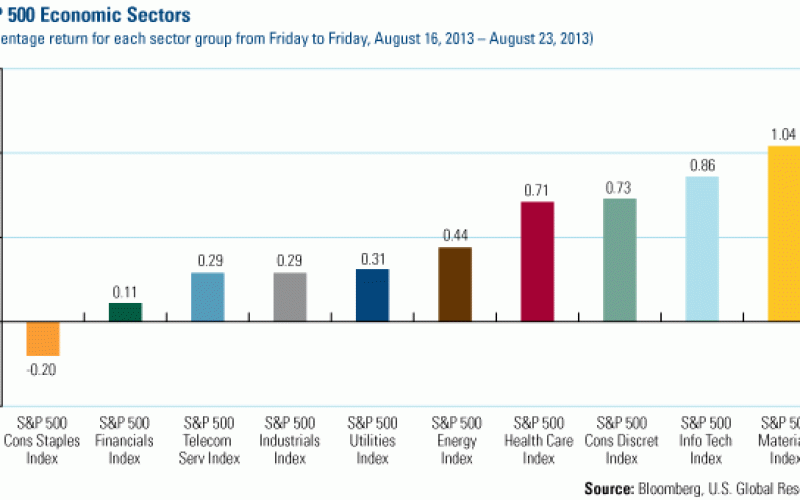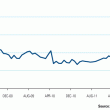U.S. Equity Market Radar (August 26, 2013)
The S&P 500 bounced back some this week after selling off last week on quantitative easing tapering concerns. Economic data remains mixed as higher yields are already having an impact on the housing market. New home sales fell sharply last month but this is being offset to some degree by stronger international data points out of Europe and China.
Strengths
- The materials sector was the best performer this week as chemical stocks led the way. Dow Chemical rose 5 percent, likely driven by better economic data out of China. Eastman Chemical and LyondellBasell were also strong performers.
- Information technology wasn’t far behind as Microsoft rose by more than 9 percent on news that CEO Steve Ballmer will step down within the next 12 months.
- Best Buy was the best performer in the S&P 500 this week rising 15.51 percent as the company reported better than expected quarterly results.
Weaknesses
- The consumer staples sector was the worst-performing sector this week falling a modest 0.20 percent. This continues a recent trend in which traditionally more defensive sectors have underperformed in response to rising bond yields.
- The financials sector was essentially flat for the week as REITs rebounded but that was offset by weak performance from insurance names.
- Abercrombie & Fitch was the worst performer in the S&P 500 for the week, falling 20.07 percent. The company reported a very poor second quarter and significantly cut third-quarter guidance.
Opportunity
- The current macro environment remains positive as economic data remains robust enough to give investors confidence in an economic recovery but not too strong as to force the Federal Reserve to change course in the near term.
- Money flows are likely to find there way into domestic U.S. equities and out of bonds and emerging markets.
- An improving macro backdrop out of Europe and China could be the next catalyst for the market to move higher.
Threat
- A market consolidation could occur in the near term after such a strong year.
- Higher interest rates are a threat for the whole economy. The Fed must walk a fine line and the potential for policy error is potentially large.
- Seasonally, September is one of the worst months of the year and volatility coming into the Federal Open Market Committee (FOMC) meeting in mid-September should be expected.
















